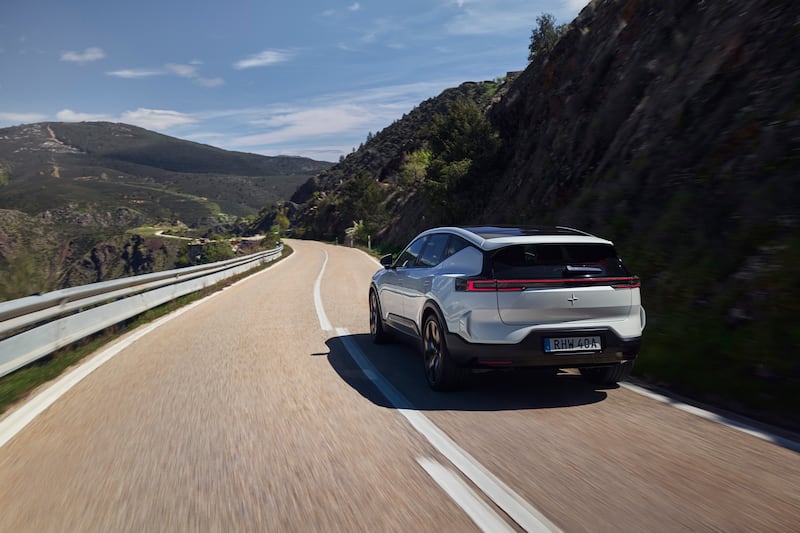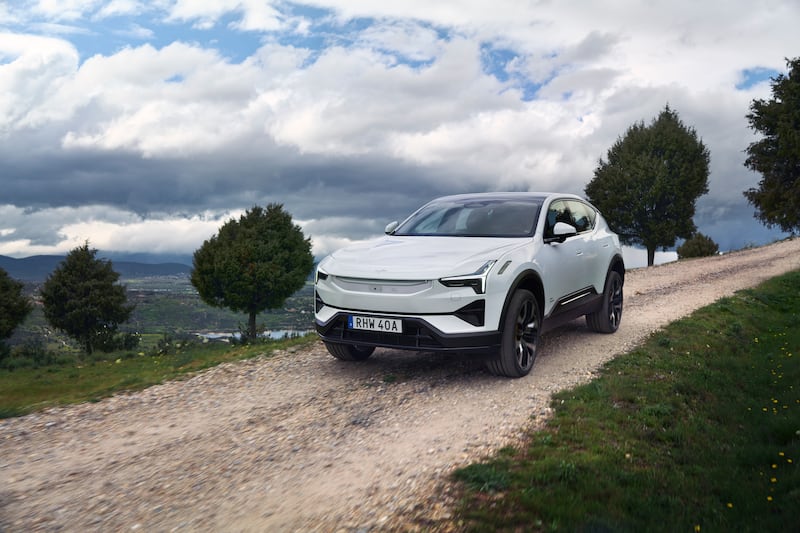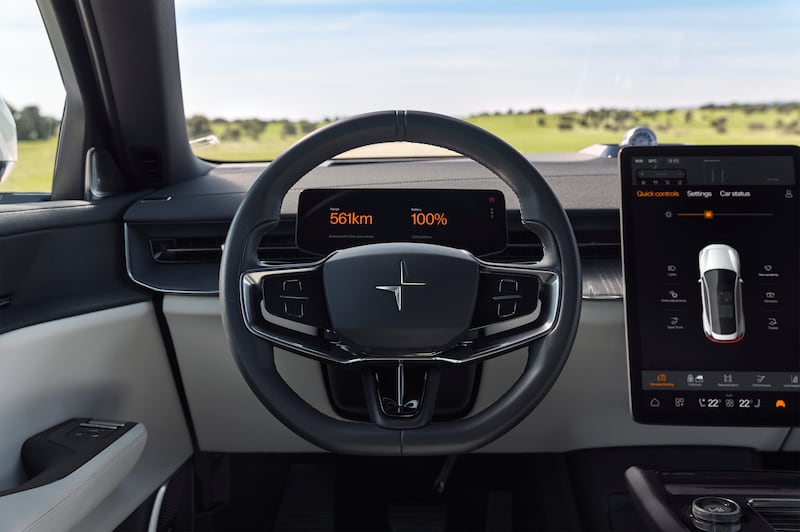The odd thing about the Polestar 3 is that although it is the up-and-coming electric car maker’s new flagship, it doesn’t sound like it should be. Polestar’s numbering system isn’t based on the size of the vehicle, nor the position it occupies in the line-up, but simply refers to the order in which it was created.
So this new Polestar 3 is bigger, more luxurious, and considerably more expensive than the existing Polestar 2 fastback saloon, which seems logical, but it’s also bigger, more luxurious, and more expensive than the upcoming Polestar 4, which seems… less logical.
This, according to Polestar, will all start to make sense when the 5 (a low-slung saloon) and the 6 (a two-seat electric sports car) arrive, and even more sense when the replacement for the 2 turns out not to be a new 2, but a 7. Personally, I’m still a bit confused…
Whatever my personal lack of comprehension, the new Polestar 3 at least expands the brand’s model line-up beyond a single car. The Polestar 2 is a likeable machine, but it has been struggling to establish the brand, and its sales have slipped of late. The Polestar 3 really ought to have been here a year ago, but delays in developing its software, and that of the closely related Volvo EX90, have meant that it’s only now actually going on sale.
READ MORE
Worth the wait? Well, it’s certainly a striking machine not least in its lowness. While the seven-seat Volvo towers over all, this five-seat Polestar 3 is notable for the fact that its roof barely reaches past my chest. In fact, at 1,614mm tall, this Polestar 3 is several centimetres lower to the ground than a BMW iX, and a whole foot (if you’ll excuse the imperial measurement) shorter than the EX90.

That’s because Polestar’s head of design, Maximilian Missoni, reckons that too many SUVs are carrying around needless height which really only helps if you’re driving while wearing a top hat. It’s also, of course, because Polestar isn’t trying to squeeze in a third row of seats, so the back seats of this 3 can be set low and laid back. Does the lack of a seven-seat option potentially limit this car’s sales chances? Possibly, but then Polestar wanted to set the 3′s stall out in an entirely different market to the big, practical Volvo’s, and the excuse given is that this is a large SUV which is also a selfish driver’s car.
It’s certainly handsome. The arrowhead headlights lead into the “smart panel” at the front, behind and in which lurk the forward-facing radar sensors and cameras and which will be a design tic of some, but not all, future Polestar models. Atop the bonnet, there’s an open front aero wing – you can slide your fingers right under it – which channels air along the bonnet, over the roof, and down to the equally open roof spoiler. The Polestar 3 has a clean, chiselled look which is vastly preferable, to these eyes at least, to the BMW iX’s confusing jumble of lines, or the Mercedes EQE SUV’s formless blob shape.
Between the wheels, there’s slightly less than 3m of space into which a 111kWh battery (of which 107kWh is useable to the driver) is crammed. For the standard two-motor long-range version, that equates to a range of 628km, but our test car is the Performance version, complete with “Swedish Gold” metallic brake calipers, sportier suspension and a power boost to 517hp (28hp on the standard model). This has a claimed range of up to 561km, but if it’s a seriously long range you want, wait for the arrival of the single-motor version of the Polestar 3, which will be able to manage as much as 660km on one charge.

For a family-friendly car 517hp, and the accompanying 910Nm of torque, is quite a lot, and to be honest it’s not really worth the extra outlay, as the standard dual-motor version has 490hp and 840Nm, which is hardly what you’d call lacking. For the record, this Performance model can accelerate from 0-100 km/h in just 4.7 seconds, while the standard model is only 0.3 seconds slower, so its gains are marginal and largely only any use for boring your friends over dinner.
Polestar bills the 3 as a sports car disguised as an SUV, and fits it with a clever clutch-pack system for the rear axle. This helps with range – as it allows the rear electric motor to be entirely disconnected from proceedings until you need its extra power – but it also helps with handling, as the clutch pack can send power to whichever rear wheel can best use it, and shunt grunt to an outside rear wheel to help pitch the nose more tightly into a corner.
At first, the Polestar 3 does feel rather engagingly sporty. The standard air suspension is certainly set up firmly, but it manages to filter out the hefty tyre slap effect that tends to afflict other stiffly-sprung Polestars. Initially, it does feel exceptionally agile for a car weighing close to 2.7 tonnes, and the steering is particularly sweet, well-weighted, and has a beautifully slim and tactile wheel rim.
However, once you start getting enthusiastic with the Polestar 3, its sportiness becomes a touch unstuck. It’s never less than enthusiastic in its feel, but sheer physics mean that low-slung nose can take an age to bite and turn properly into a tight corner, no matter how much the rear axle braking and vectoring helps. Basically, you’re driving a big, hefty SUV and while it is one of the better of its species, it’s most definitely not a sports car.

Certainly, no sports car ever had a cabin this roomy. Polestar’s design style is to take as much volume and visual weight out of the interior as possible, but to still leave things feeling and looking luxurious. That has absolutely been achieved, and the touches of recycled and recyclable materials in the cabin are nice, but there are some bits and pieces that feel rather cheap for a car costing this much, while the big upright touchscreen in the centre of the dash can be rather fiddly at times (can’t they all?).
The rear seats are sumptuous, though, and really benefit from that low and laid-back driving position, which directs your natural eyeline up and out through the big glass roof rather than through the side windows. The boot measures a useful 597 litres, but only if you pack it to the roof, so the low-slung nature does have its price.
The Polestar 3 is an interesting car – more overtly sporting than most of its rivals, and a useful €24,000 less than the cheapest Volvo EX90, which uses all of the same mechanical bits underneath. Will Irish buyers finally latch on to Polestar as the enthusiastic choice in the electric car world? There’s a chance, but one suspects that Polestar’s best work is yet to come.















